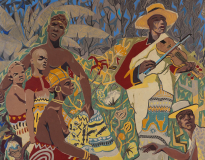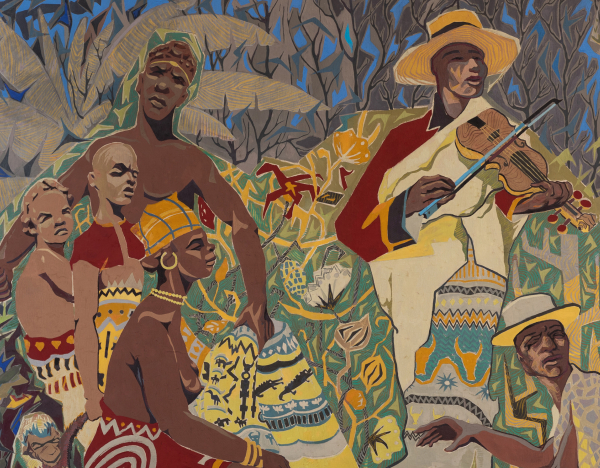Rabesahala Coco
( 1927-1999 )
Biography
Edmond Rabesahala was a successful painter and defender of the Malagasy culture. His career and his work were embedded with the aesthetic developments and the internal political upheavals of Madagascar in the 20th century. Edmond Rabesahala is better known by the name Coco Rabesahala in the art world. He was born on February 11, 1927, in a family of renowned members living in Ambohimanga. Coco notably spent his childhood with his cousin Gisèle Rabesahala (1929-2011), a celebrated Malagasy woman politician who devoted her life to her country’s independence. Coco Rabesahala first exhibited his paintings at a Paris Salon as early as 1954. Although nothing is known of his training, he probably trained at the School of Fine Arts in Antananarivo founded in 1922. This local teaching structure had been stimulated in 1923 by the first exhibition of modern paintings by Henri Matisse, Pablo Picasso, Georges Braque, Fernand Léger, André Derain and Maurice de Vlaminck. The Parisian societies of the Salon des Artistes Indépendants, the Salon d’Automne, the Salon des Artistes Français and the Société Nationale des Beaux-Arts, sponsored the art exhibition testifying of the colonial network set up between France and Madagascar. Coco Rabesahala exhibited during four years at the Société des Beaux-Arts de la France d’Outre-Mer (in 1954, 1955, 1956 and 1960), held at the Palais de New York in Paris, alongside praised Malagasy artists. He devoted himself to painting during this decade and won several international prizes. In 1954, he was ranked second for the Prix de l’Afrique Equatoriale Française (after painter Renée Jullien). In 1955, he earned 1.000 fr with the Grand Prix of Ministry for French Overseas Territories. In 1957, he won a prize at the 4th exhibition of the Association of Artists Painters and Art Connoiseurs of Tunisia.The present painting dates from an intensely creative period at the beginning of his international career. The large format evokes the dimensions associated with history painting. The painting represents the habits and customs of the Malagasy culture. Two musicians attract the attention of a family of two children on the left and of a farmer with his zebu cow on the right. Their traditional Malagasy costume is composed by colorful cotton or silk clothes called lamba. The musicians like the famer belong to the Betsileos populations who lived in the southern part of the central lands of Madagascar, also represented by the French painter Lucien Lièvre (1878 - 1936), Grand Prix of Madagascar in 1931.
93400 Saint-Ouen sur Seine

